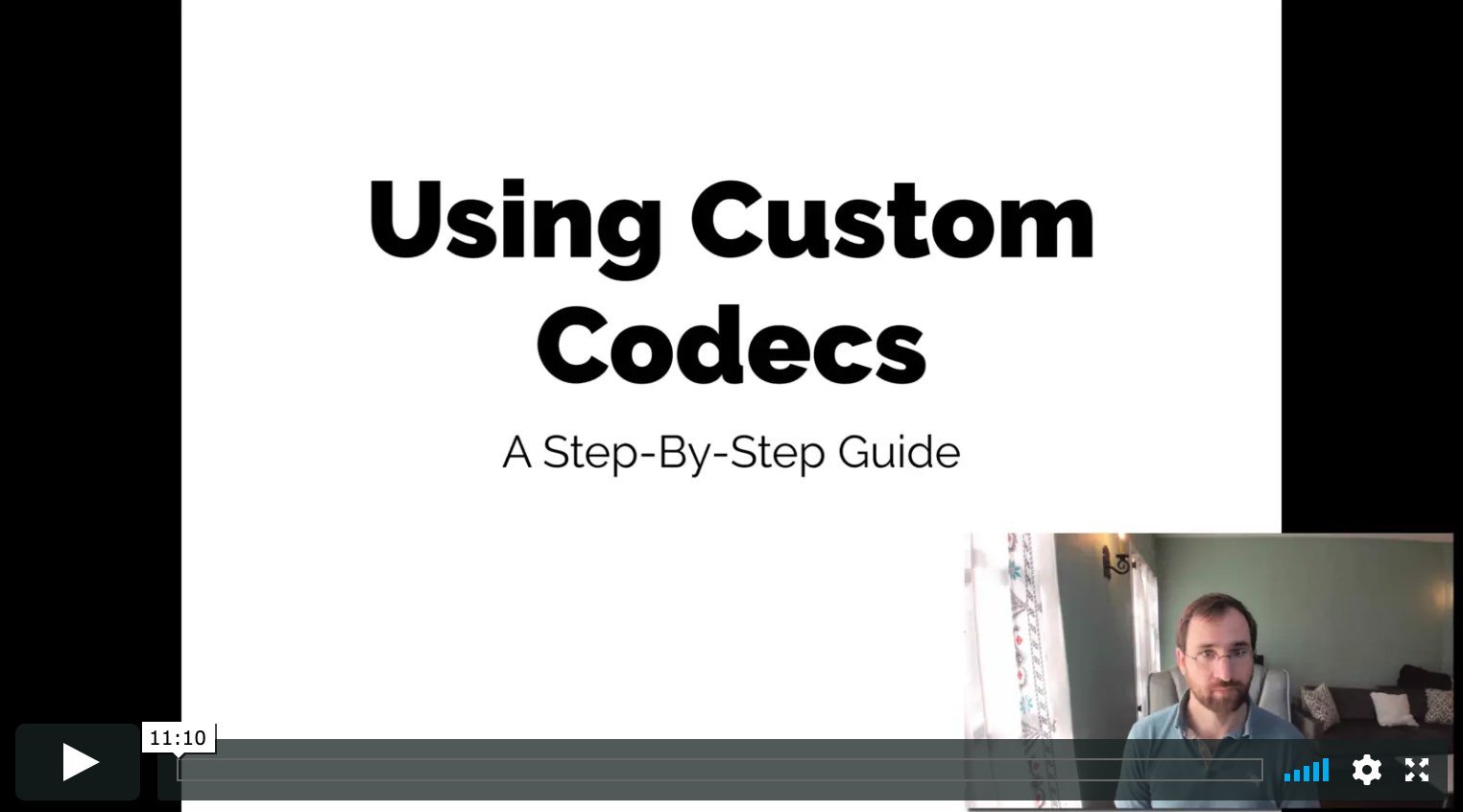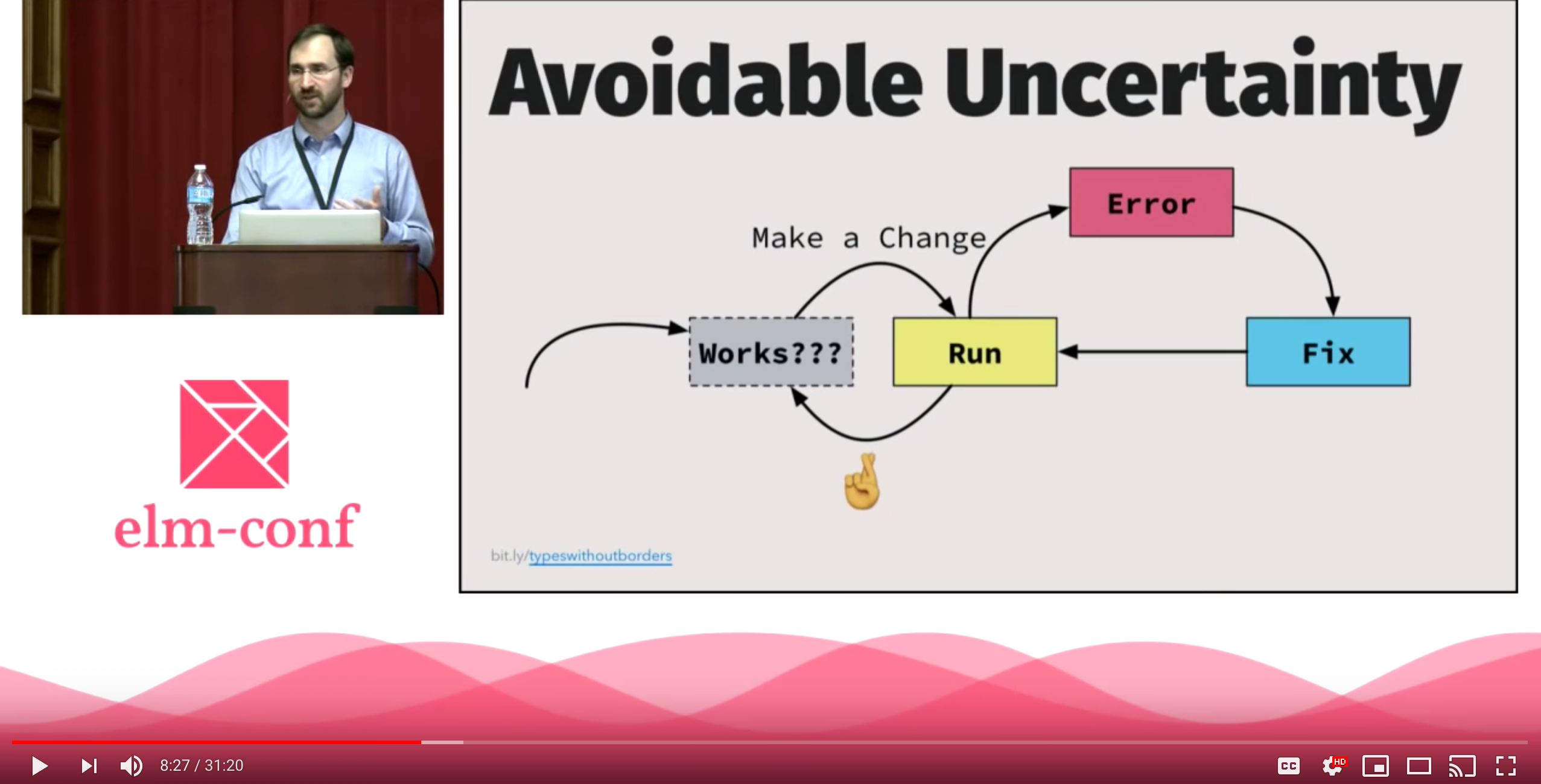dillonkearns/elm-graphql
Why use this package over the other available Elm GraphQL packages? This is the only one that generates type-safe code for your entire schema. Check out this blog post, Type-Safe & Composable GraphQL in Elm, to learn more about the motivation for this library. (It's also the only type-safe library with Elm 0.18 or 0.19 support, see this discourse thread).
I built this package because I wanted to have something that:
- Gives you type-safe GraphQL queries (if it compiles, it's valid according to the schema),
- Creates decoders for you in a seamless and failsafe way, and
- Eliminates GraphQL features in favor of Elm language constructs where possible for a simpler UX (for example, GraphQL variables & fragments should just be Elm functions, constants, lets).
See an example in action on Ellie. See more end-to-end example code in the
examples/
folder.
Overview
dillonkearns/elm-graphql is an Elm package and accompanying command-line code generator that creates type-safe Elm code for your GraphQL endpoint. You don't write any decoders for your API with dillonkearns/elm-graphql, instead you simply select which fields you would like, similar to a standard GraphQL query but in Elm. For example, this GraphQL query
query {
human(id: "1001") {
name
homePlanet
}
}would look like this
in dillonkearns/elm-graphql (the code in this example that is prefixed with StarWars is auto-generated)
import Graphql.Operation exposing (RootQuery)
import Graphql.SelectionSet as SelectionSet exposing (SelectionSet)
import StarWars.Object.Human as Human
import StarWars.Query as Query
import StarWars.Scalar exposing (Id(..))
query : SelectionSet (Maybe Human) RootQuery
query =
Query.human { id = Id "1001" } humanSelection
type alias HumanData =
{ name : String
, homePlanet : Maybe String
}
humanSelection : SelectionSet Human StarWars.Object.Human
humanSelection =
SelectionSet.map2 HumanData
Human.name
Human.homePlanetGraphQL and Elm are a perfect match because GraphQL is used to enforce the types that your API takes as inputs and outputs, much like Elm's type system does within Elm. elm-graphql simply bridges this gap by making your Elm code aware of your GraphQL server's schema. If you are new to GraphQL, graphql.org/learn/ is an excellent way to learn the basics.
After following the installation instructions to install the @dillonkearns/elm-graphql
NPM package and the proper Elm packages (see the Setup section for details).
Once you've installed everything, running the elm-graphql code generation tool
is as simple as this:
npx elm-graphql https://elm-graphql.herokuapp.com --base StarWars --output examples/srcIf headers are required, such as a Bearer Token, the --header flag can be supplied.
npx elm-graphql https://elm-graphql.herokuapp.com --base StarWars --output examples/src --header 'headerKey: header value'Learning Resources
-
There is a thorough tutorial in the
SelectionSetdocs.SelectionSets are the core concept in this library, so I recommend reading through the whole page (it's not very long!). -
The
examples/folder is another great place to start. -
If you want to learn more GraphQL basics, this is a great tutorial, and a short read: graphql.org/learn/
-
My Elm Conf 2018 talk goes into the philosophy behind
dillonkearns/elm-graphql
(Skip to 13:06 to go straight to the dillonkearns/elm-graphql demo).
- My 10-minute video tutorial on how to leverage Custom Scalars in
elm-graphqlusing the Scalar Codecs feature.
- A Beginner's Guide to GraphQL with Elm by @martimatix
- Graphqelm: Optional Arguments in a Language Without Optional Arguments by @martimatix
- Comprehensive tutorial by the Hasura Team
If you're wondering why code is generated a certain way, you're likely to find an answer in the Frequently Asked Questions (FAQ).
There's a very helpful group of people in the #graphql channel in the Elm Slack. Don't hesitate to ask any questions about getting started, best practices, or just general GraphQL in there!
Setup
dillonkearns/elm-graphql generates Elm code that allows you to build up type-safe GraphQL requests. Here are the steps to setup dillonkearns/elm-graphql.
-
Add the
dillonkearns/elm-graphqlelm package as a dependency in yourelm.json. You will also need to make sure thatelm/jsonis a dependency of your project since the generated code has lots of JSON decoders in it.elm install dillonkearns/elm-graphql elm install elm/json
-
Install the
@dillonkearns/elm-graphqlcommand line tool through npm. This is what you will use to generate Elm code for your API. It is recommended that you save the@dillonkearns/elm-graphqlcommand line tool as a dev dependency so that everyone on your project is using the same version.npm install --save-dev @dillonkearns/elm-graphql # you can now run it locally using `npx elm-graphql`, # or by calling it through an npm script as in this project's package.json
-
Run the
@dillonkearns/elm-graphqlcommand line tool installed above to generate your code. If you used the--save-devmethod above, you can simply create a script in your package.json like the following:{ "name": "star-wars-elm-graphql-project", "version": "1.0.0", "scripts": { "api": "elm-graphql https://elm-graphql.herokuapp.com/api --base StarWars" } -
With the above in your
package.json, runningnpm run apiwill generatedillonkearns/elm-graphqlcode for you to call in./src/StarWars/. You can now use the generated code as in this Ellie example or in theexamplesfolder.
Subscriptions Support
You can do real-time APIs using GraphQL Subscriptions and dillonkearns/elm-graphql.
Just wire in the framework-specific JavaScript code for opening the WebSocket connection
through a port. Here's a live demo and its
source code. The demo server is running Elixir/Absinthe.
Contributors
Thank you Mario Martinez (martimatix) for all your feedback, the elm-format PR, and for the incredible logo design!
Thank you Mike Stock (mikeastock) for setting up Travis CI!
Thanks for the reserved words pull request @madsflensted!
A huge thanks to @xtian for doing the vast majority of the 0.19 upgrade work! 🎉
Thank you Josh Adams (@knewter) for the code example for Subscriptions with Elixir/Absinthe wired up through Elm ports!
Thank you Romario for adding OptionalArgument.map!
Thank you Aaron White for your pull request to improve the performance and
stability of the elm-format step! 🎉
Roadmap
All core features are supported. That is, you can build any query or mutation
with your dillonkearns/elm-graphql-generated code, and it is guaranteed to be valid according
to your server's schema.
dillonkearns/elm-graphql will generate code for you to generate subscriptions
and decode the responses, but it doesn't deal with the low-level details for
how to send them over web sockets. To do that, you will need to use
custom code or a package that knows how to communicate over websockets (or whichever
protocol) to setup a subscription with your particular framework. See
this discussion for why
those details are not handled by this library directly.
I would love to hear feedback if you are using GraphQL Subscriptions. In particular, I'd love to see live code examples to drive any improvements to the Subscriptions design. Please ping me on Slack, drop a message in the #graphql channel, or open up a Github issue to discuss!
I would like to investigate generating helpers to make pagination simpler for Connections (based on the Relay Cursor Connections Specification). If you have ideas on this chime in on this thread.



